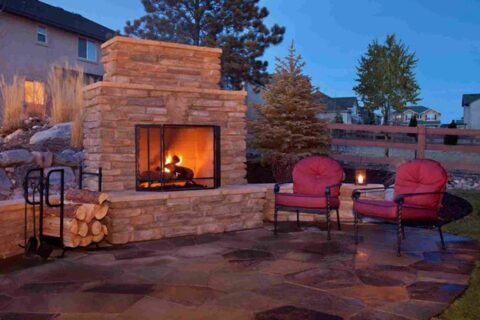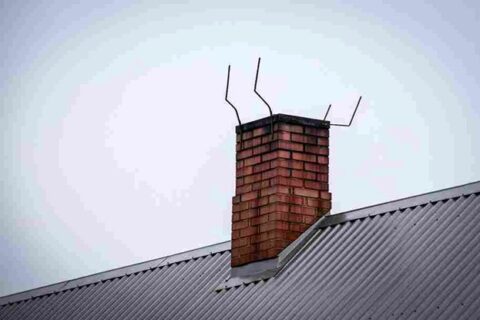Masonry Versus Prefab Fireplaces
Fireplaces are not created equal.
In general, fireplaces come in two types: masonry and factory-built or “prefab.”
Figuring out which type you own will just take a moment. Masonry fireplaces have a firebox built of individual bricks, a brick chimney extending above the roof, and beyond the damper is a pyramid-shaped structure made of brick. Prefab fireplaces have fireboxes consisting of cast refractory panels and will typically feature some metal visible in your home around the firebox. Looking up past the damper, you should spot a rounded metal chimney. Finally, above the roof is more rounded metal sometimes housed by simulated brick.
These two types of fireplaces require different types of care by homeowners.
Care of masonry fireplaces
Masonry fireplaces are massive structures weighing six or seven tons. Constructed of bricks or stone and mortar, they are aesthetically lovely and require a minimum of maintenance. They can last a lifetime.
Masonry fireplaces need an extensive footing for support. Otherwise, they can shift and crack which will then allow combustibles to get out. Owners should watch for any sign of shifting or settling. Settling will sometimes appear inside the firebox where the facing material meets the firebrick. Outside, a key way to keep settling issues at bay is by directing all water away from the fireplace, such as sloping the ground away from the structure.
Masonry is clearly quite durable, and some homeowners view it as indestructible. This isn’t true, especially when it is part of a chimney. Chimneys have no roof cover and are vulnerable to rain and the cycle of freeze and thaw. Some excellent ways to keep the chimney from needing repairs are quality chimney covers, making certain the crown is in good condition, and investing in a good quality crown cover.
The chimney’s firebox is exposed to the brunt of the fire’s heat. Homeowners should pay special attention here. Over time, the joints may fail from continuously expanding and contracting. Fireboxes should have refractory mortar but often do not. Fireplaces lacking chimney covers may have rain pool on the smoke shelf, mix with soot, and form an acidic substance that can destroy mortar joints. It is important to keep these joints in good repair by using a high-temperature refractory mortar. This ensures the fire is contained.
As long as they are properly maintained, the tile liners used for most masonry fireplaces will stay in good shape. However, a chimney fire can crack these tiles and cause them to become ineffective. Generally, masonry fireplaces should be swept before the accumulation of 1/8 inch of soot. If homeowners have a chimney fire, it is essential that the chimney be swept and inspected before being used again.
Care of prefab fireplaces
Prefab or factory-built fireplaces are relatively new to the market.
Unlike masonry fireplaces, prefab fireplaces are mostly metal and arrive from factories as a complete unit. With proper installation and care, they can last years. However, there are special things for homeowners to consider.
Prefab fireplaces and chimneys are one system, designed to work together. Both undergo testing together, and are meant to be used together.
Installation instructions must be followed to the letter—this is particularly true related to clearances from the firebox and chimney to any potential combustibles. The majority of manufacturers require at least two inches of air between the chimney and any wood framing. If homeowners already have a prefab fireplace installed, it is important they check these clearances. Wood that is too close to the chimney can catch fire at temperatures as low as 200 degrees. Chimney inspectors find most prefab units are improperly installed, so checking clearances in the attic is important. Inspecting the firebox can be even more tricky.
Most factory-built fireplaces are tested and listed as “decorative” and may not hold up to intensely heavy usage. Over usage and chimney fires can badly damage these systems. These require annual maintenance and careful monitoring.
Birds seem to prefer nesting in prefab chimneys—especially the older types with imitation brick housing above the roof. Chimney sweeps frequently remove a volume of nesting material from these. This nesting can catch fire, or block crucial air passage and cause the chimney to overheat. Both of these scenarios can cause house fires. Most after-market chimney covers are ineffective and can actually make this problem worse. Homeowners should make certain that all potential nesting areas are properly screened and protected.
Prefab fireplaces will eventually wear out. When they do, the model may no longer be in production or the company that made it may no longer be in business. Homeowners should keep a close eye on these systems and prepare to swap them out before they give out completely.
If you have any questions regarding the care of your masonry or prefab fireplace, contact ChimneyTEK and we will be glad to assist.


